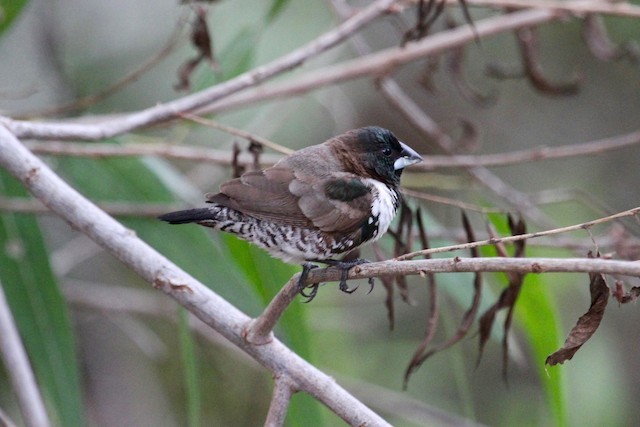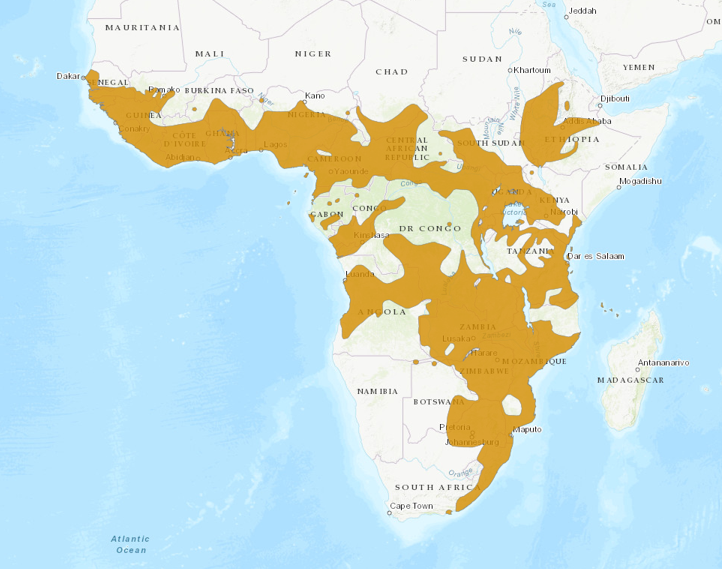Birdfinding.info ⇒ Common across most of its range—one of the most ubiquitous African songbirds. On Puerto Rico, common in San Juan and most other lowland sites, such as Boquerón Wildlife Refuge and Cabo Rojo and Laguna Cartagena National Wildlife Refuges. In southern California, the most reliable site is Huntington Central Park; in Cape Town, Kirstenbosch National Botanical Garden.
Bronze Mannikin
Spermestes cucullata
Sub-Saharan Africa in a wide range of open and wooded habitats, but not in deserts or dense forests. Introduced to Puerto Rico and southern California.
Widespread from Senegal east to Sudan and Ethiopia and south to southern Angola, northeastern Namibia (the Caprivi Strip), and eastern South Africa (naturally to Port Elizabeth; introduced to the Cape Town area). Also occurs on the major islands of the Gulf of Guinea and several in the Indian Ocean: Pemba, Zanzibar, Mafia Island, and the Comoros.
Introduced to Puerto Rico via vessels of the slave trade, and well established throughout the coastal lowlands, locally in the interior valleys, and on Vieques and Culebra.
In California, it was first reported in numbers in Los Angeles around 2014, and appears to be spreading southward. Small numbers have also appeared around Houston, Texas.
Identification
A small finch with a large bicolored bill and dark brown hood.
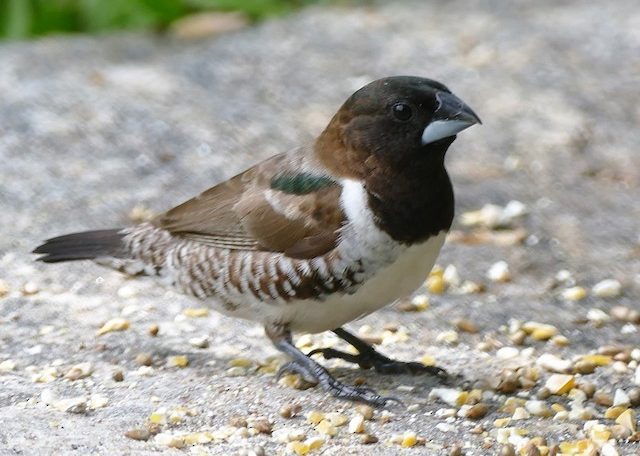
Bronze Mannikin, S. c. scutata. (Chimoio, Mozambique; August 13, 2017.) © Jane Williamson
Adult’s upperparts are cold-brown overall. Its underparts are white with variable extent of brown, scaly markings on sides, flanks, rump, and vent.
Typically show patches of green iridescence on its head and shoulders—and in the western subspecies also on the flanks.
The upper mandible is black and the lower is pale gray.
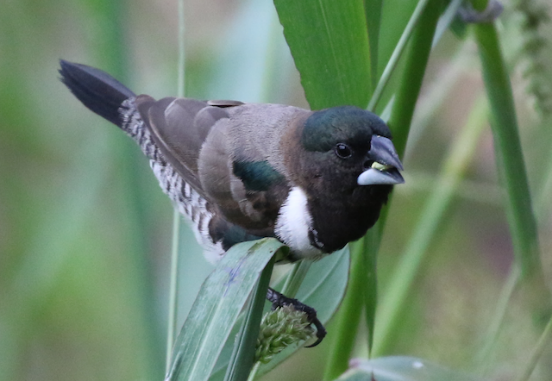
Bronze Mannikin, S. c. cucullata. (Huntington Central Park, Orange County, California; September 16, 2017.) © C. Jackson

Bronze Mannikin, S. c. cucullata. (Kotu Creek, Banjul, Gambia; April 19, 2018.) © Alexander Hagge
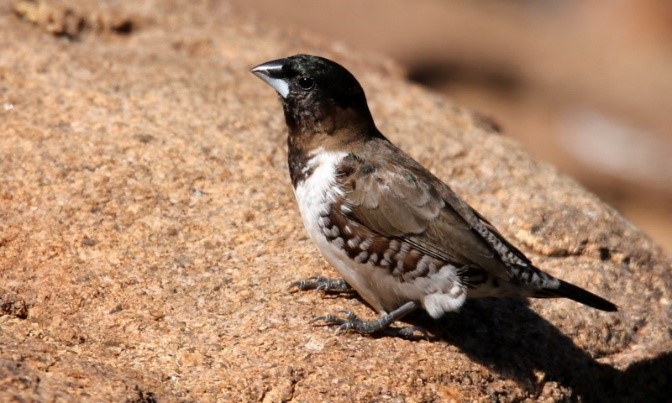
Bronze Mannikin, S. c. scutata. (Johannesburg, South Africa; December 3, 2018.) © Fayne Connelly
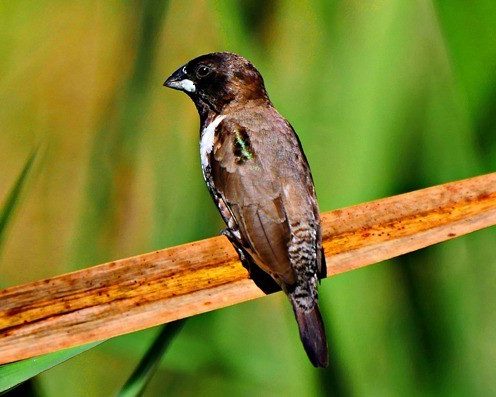
Bronze Mannikin, S. c. cucullata. (Laguna Cartagena National Wildlife Refuge, Puerto Rico; February 18, 2017.) © Sadhu Govardhan
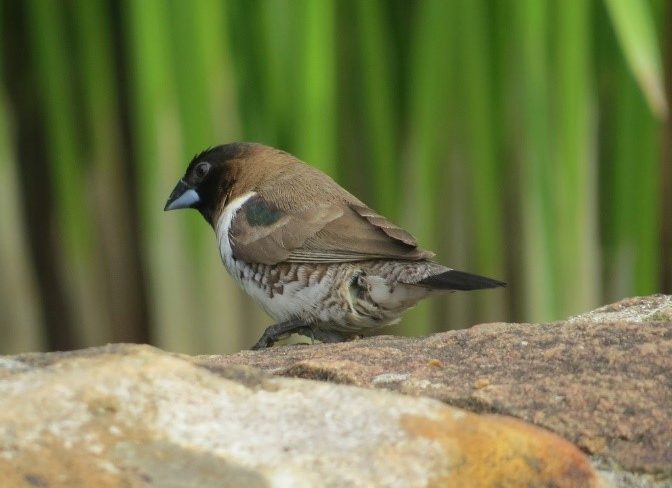
Bronze Mannikin, S. c. scutata. (Cape Town, South Africa; April 7, 2019.) © patriciat2

Bronze Mannikin, S. c. scutata. (Conda, Angola; May 27, 2017.) © Rogério Ferreira
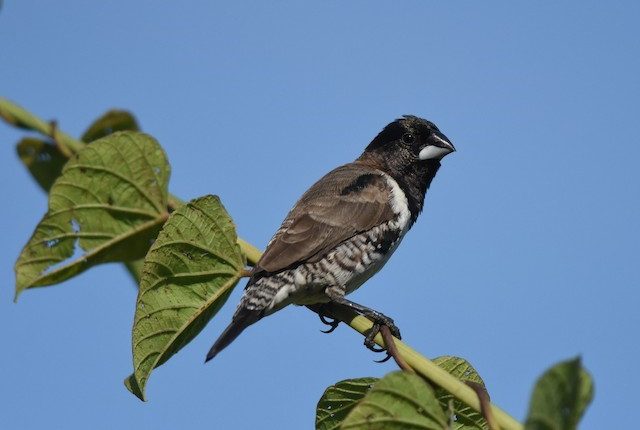
Bronze Mannikin, S. c. cucullata. (Laguna Cartagena National Wildlife Refuge, Puerto Rico; May 18, 2015.) © Daniele Mitchell
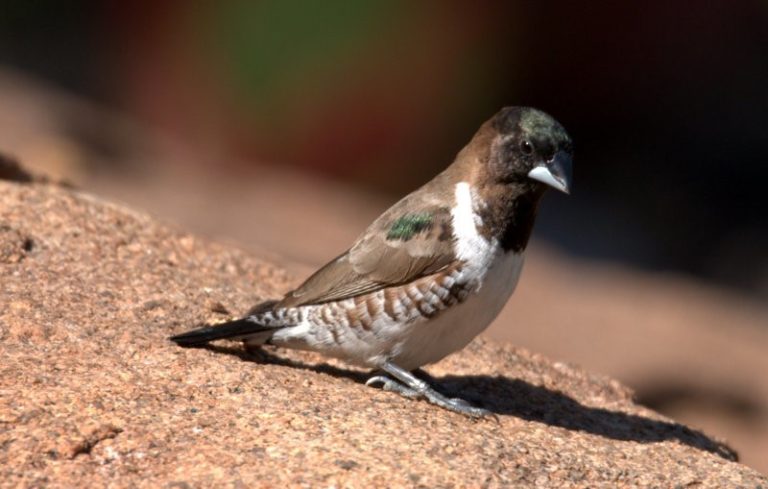
Bronze Mannikin, S. c. scutata. (Johannesburg, South Africa; December 3, 2018.) © Fayne Connelly

Bronze Mannikin, S. c. scutata. (Wakiso, Uganda; June 13, 2017.) © WildNothos
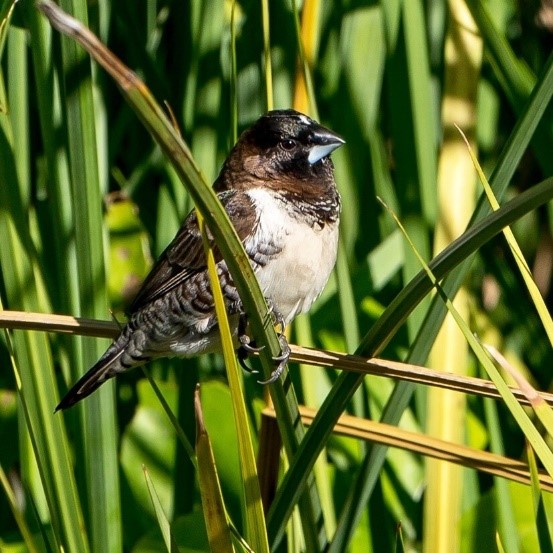
Bronze Mannikin, S. c. scutata. (Kirstenbosch National Botanical Garden, Cape Town, South Africa; July 15, 2018.) © João Quental

Bronze Mannikin, S. c. scutata. (Centurion, South Africa; January 9, 2018.) © tjeerd
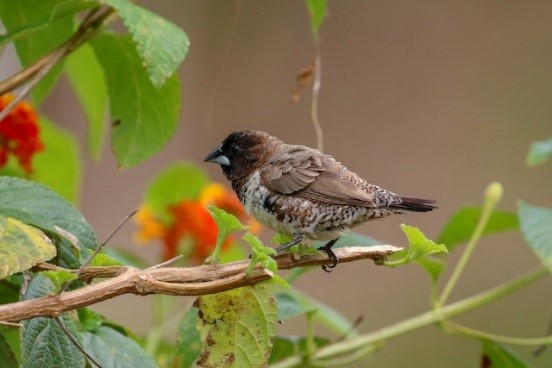
Bronze Mannikin, S. c. cucullata. (Hans Cottage Botel, Cape Coast, Ghana; October 24, 2015.) © Tommy Pedersen
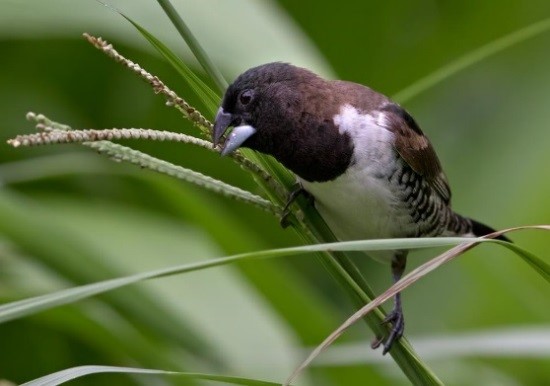
Bronze Mannikin, S. c. cucullata. (Santo António, Principe, São Tomé & Principe; September 22, 2017.) © Lars Petersson
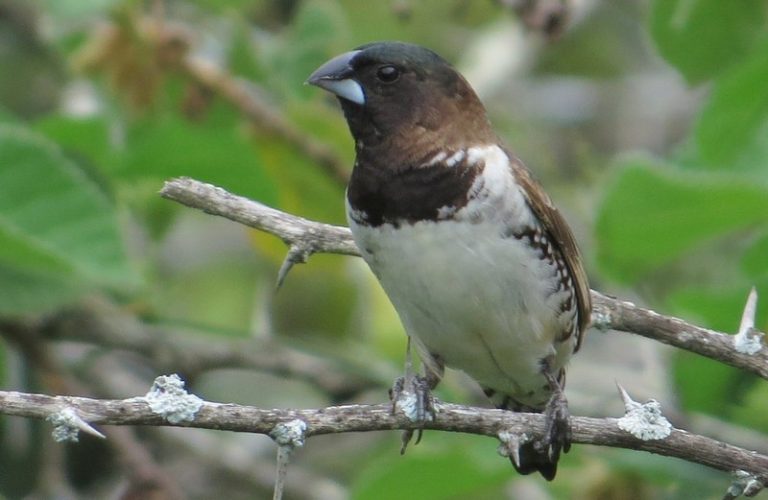
Bronze Mannikin, S. c. scutata—note that this individual has an all-pale bill. (Ehlanzeni, South Africa; March 3, 2018.) © Gawie Malan
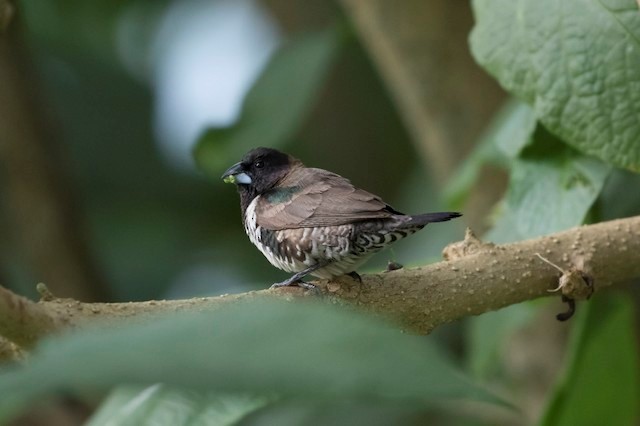
Bronze Mannikin, S. c. scutata. (Chimpanzee Guesthouse, Uganda; December 4, 2017.) © Michael Todd

Bronze Mannikin, S. c. scutata. (Umhlanga Lagoon Nature Reserve, KwaZulu-Natal, South Africa; September 9, 2017.) © Ronald Flipphi
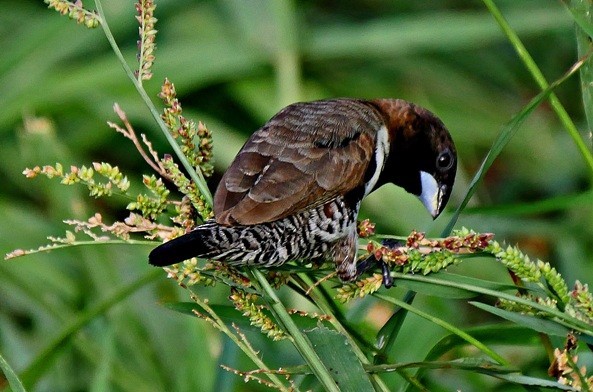
Bronze Mannikin, S. c. cucullata. (Cabo Rojo National Wildlife Refuge, Puerto Rico; June 26, 2017.) © Sadhu Govardhan
Immature is typically warm-brown overall: darker and duller on the upperparts, often showing a preliminary hood, and paler and buffier on the underparts. Its bill is typically all-dark.
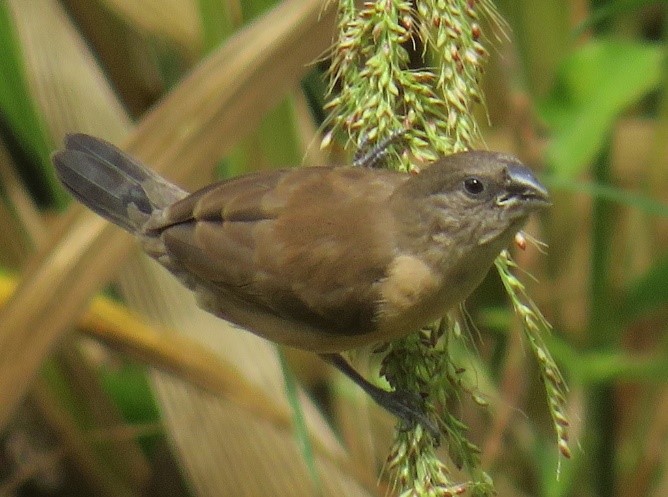
Bronze Mannikin, S. c. scutata, immature. (St. Lucia, KwaZulu-Natal, South Africa; February 17, 2019.) © magdastlucia
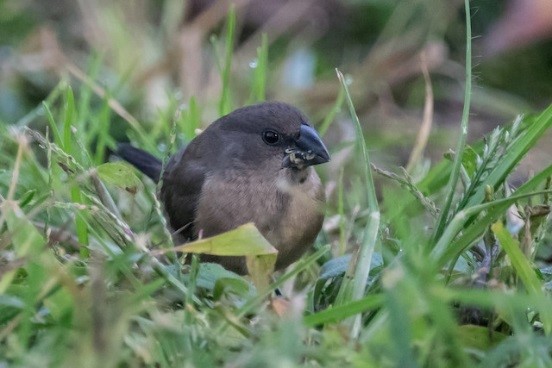
Bronze Mannikin, S. c. cucullata, immature. (Huntington Central Park, Orange County, California; October 11, 2017.) © Nancy Christensen
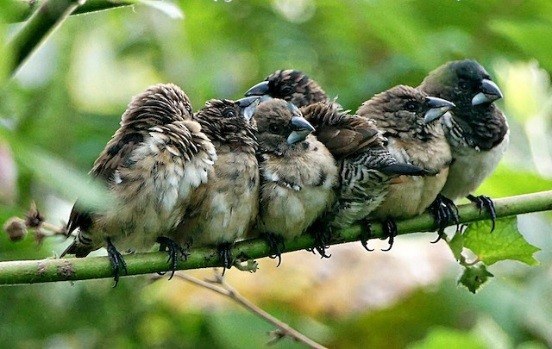
Bronze Mannikin, S. c. cucullata, close family. (Punta Algarrobo, Mayagüez, Puerto Rico; January 30, 2016.) © Sadhu Govardhan
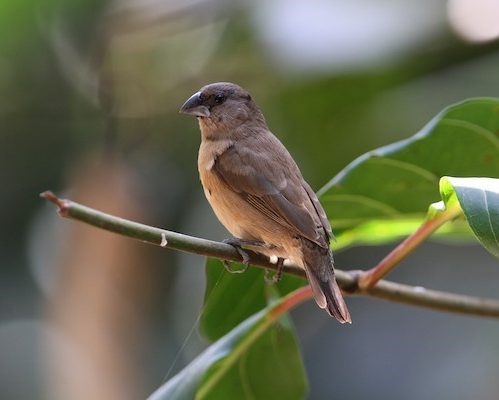
Bronze Mannikin, S. c. cucullata, immature. (Abuko Nature Reserve, Gambia; January 4, 2014.) © Christoph Moning

Bronze Mannikin, S. c. scutata, immature showing preliminary hood. (Entebbe Gately Inn, Uganda; January 3, 2017.) © Emilie Chen
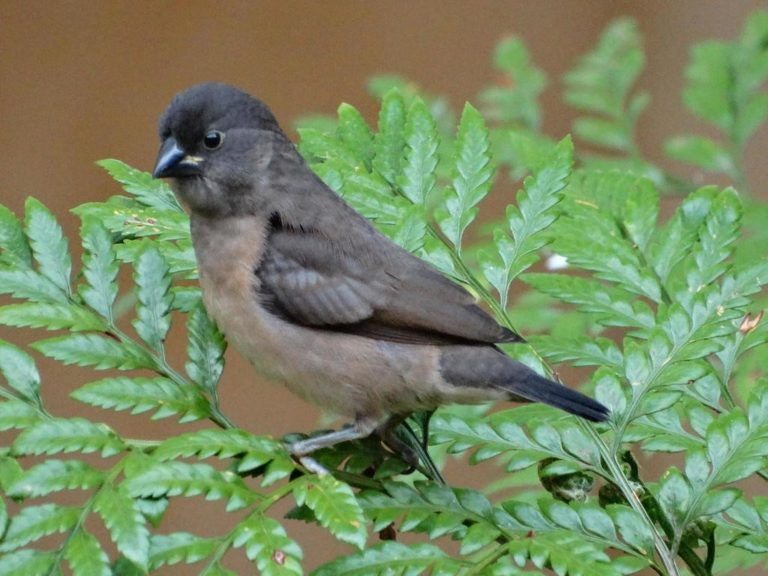
Bronze Mannikin, S. c. scutata, immature. (Centurion, South Africa; December 26, 2013.) © Carol Huisman
Voice. Common calls are soft chirps, either single or paired or in brief phrases: Flocks generate a constant twitter: The song is described as “a series of chi-chiu che-ri-hit notes run together or frequently repeated.”
Cf. Magpie Mannikin. Bronze is very similar to Magpie Mannikin, which occurs locally across much of Bronze Mannikin’s African range. Magpie differs is having a blacker hood and an even larger bill that is similarly bicolored but typically shows less contrast between the mandibles. Magpie’s underparts are typically clean white with a partial breastband and a few brown bars on its sides—not finely scaled as in Bronze Mannikin.
Cf. Various Asian Munias. Several Lonchura munias have approximately the same overall coloration, bill, hooded appearance as Bronze Mannikin. There is no natural range overlap, but introductions could bring them together anywhere. The differences vary by species, but none has Bronze’s green iridescence or pattern of scaling on sides, flanks, vent, and rump.
Notes
Polytypic species consisting of two recognized subspecies.
References
BirdLife International. 2016. Spermestes cucullata. The IUCN Red List of Threatened Species 2016: e.T22719782A94643856. http://dx.doi.org/10.2305/IUCN.UK.2016-3.RLTS.T22719782A94643856.en. (Accessed June 30, 2019.)
eBird. 2019. eBird: An online database of bird distribution and abundance. Cornell Lab of Ornithology, Ithaca, N.Y. http://www.ebird.org. (Accessed June 30, 2019.)
Payne, R. 2019. Bronze Mannikin (Spermestes cucullata). In Handbook of the Birds of the World Alive (J. del Hoyo, A. Elliott, J. Sargatal, D.A. Christie, and E. de Juana, eds.). Lynx Edicions, Barcelona. https://www.hbw.com/node/61181. (Accessed June 30, 2019.)
Raffaele, H., J. Wiley, O. Garrido, A. Keith, and J. Raffaele. 1998. A Guide to the Birds of the West Indies. Princeton University Press, Princeton, N.J.
Restall, R. 1996. Munias and Mannikins. Yale University Press, New Haven.
van Perlo, B. 1999. Birds of Southern Africa. Princeton University Press, Princeton, N.J.
van Perlo, B. 2002. Birds of Western and Central Africa. Princeton University Press, Princeton, N.J.
